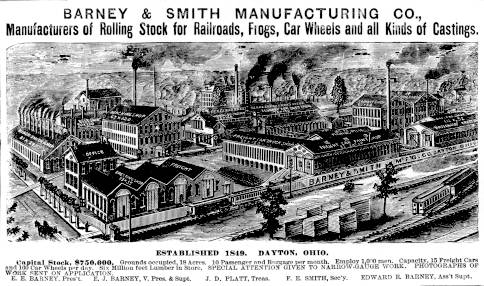Many of the employees of Barney & Smith were Hungarian immigrants who lived in a collective community. Paid in company script that could only be spent at the company store, the immigrant employees were essentially confined to the company. The company is responsible for the large Hungarian heritage in the Dayton area.
While many other car companies, such as Pullman, were driving forward with new technologies, Barney & Smith simply kept producing the same products. Metal cars were beginning to be commonplace. Barney & Smith did not change anything and kept producing all wood cars, seriously pricing themselves out of the market. Over the next few years, the company began to decline, maintaining high quality that was often too expensive for its customers.

The 1913 Flood put the nail in the coffin for the Barney & Smith Car Company. The factory was seriously damaged by the flood and people reported that lumber from the Barney & Smith Company washed up in New Orleans. The company lost around 80 to 90 percent of its inventory. They managed to hang on for a few more years before it closed it doors in 1921.

No comments:
Post a Comment